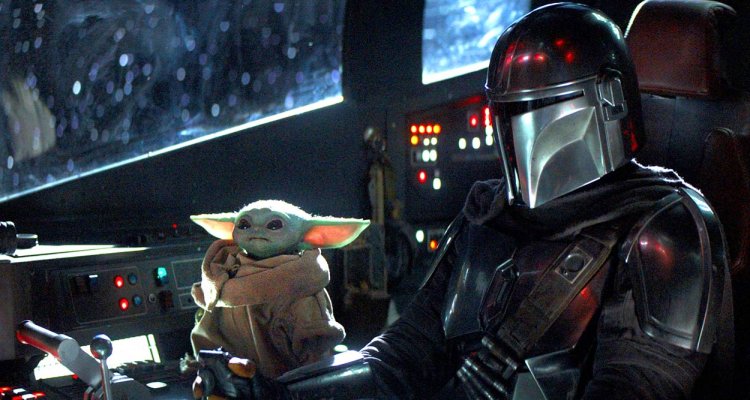The first season of “The Mandalorian” also known as “The Baby Yoda Variety Hour”, or “The money-making machine for which Disney mistakenly chose not to release merchandise in time” just came to a close. Mere hours after the release of the eight and final episode of the season, creator Jon Favreau took to Twitter to calm a furious audience desperate for news about the return of the chosen one, Baby Yoda, and reassured fans that the-green-baby-to-unite-them-all will return in fall of 2020 with a second season.
READ MORE: ‘The Mandalorian’: Season Finale Brings Redemption & A Big Tease For Season 2 [Review]
Season one of “The Mandalorian” has been a weird experiment for the “Star Wars” franchise. We’ve been hearing for decades how George Lucas wanted to create a TV show to focus on the underworld of his franchise far, far away. When we finally got it, it came at the height of Peak TV, in the same year that “Game of Thrones” ended, and with it, we thought that the notion of the “water-cooler” show would end. Instead of a “Game of Thrones” successor that would mix the intrigue and serialized storytelling of George R. R. Martin’s world with the grand space opera of George Lucas’s “Star Wars,” we got a fun but highly episodic series of adventures that for the most part felt disconnected.
READ MORE: The Events Of ‘Rise Of Skywalker’ Prove That ‘Star Wars’ Has A Canon Problem
Indeed, “The Mandalorian” mostly resembles the serials like “Flash Gordon” that inspired Lucas to make “Star Wars” in the first place. And it doesn’t really come as a surprise that “The Mandalorian” would follow this structure given the involvement of Dave Filoni in the show, as he previously worked in both “The Clone Wars,” and “Star Wars: Rebels.” Both shows did an excellent job of deepening the lore of “Star Wars,” giving the audience a chance to learn more about communities and characters that the movies didn’t spend enough time with, such as the clone that fought in the war, the politicians who allowed Palpatine to rule the galaxy, and even the droids that helped both sides of the conflict. Anakin Skywalker went from a whiny, annoying brat to a complex, flawed but inspiring hero who whose fall became tragic instead of laughable. Meanwhile, “Rebels” doubled down on the themes and the stories of “The Clone Wars” and finally made us care about the individuals fighting against the Empire who weren’t named Luke, Han or Leia.
As for “The Mandalorian,” the show was best when it managed to shine a light on aspects of the franchise we hadn’t seen before, such as with the story of IG-11 and whether droids can actually change their programming. Sure, the side quests could be a lot of fun, including a heist episode full of action and betrayal, but for season 2 the show could take a page out of its animated predecessors and devote more time to serialized arcs that advanced the main plot of the show, even if it eventually deviated to tell cute stories involving a green baby.
Here’s the season 2 announcement:
Season 2 of #TheMandalorian coming Fall 2020 pic.twitter.com/8VQYLDMQ0V
— Jon Favreau (@Jon_Favreau) December 27, 2019

